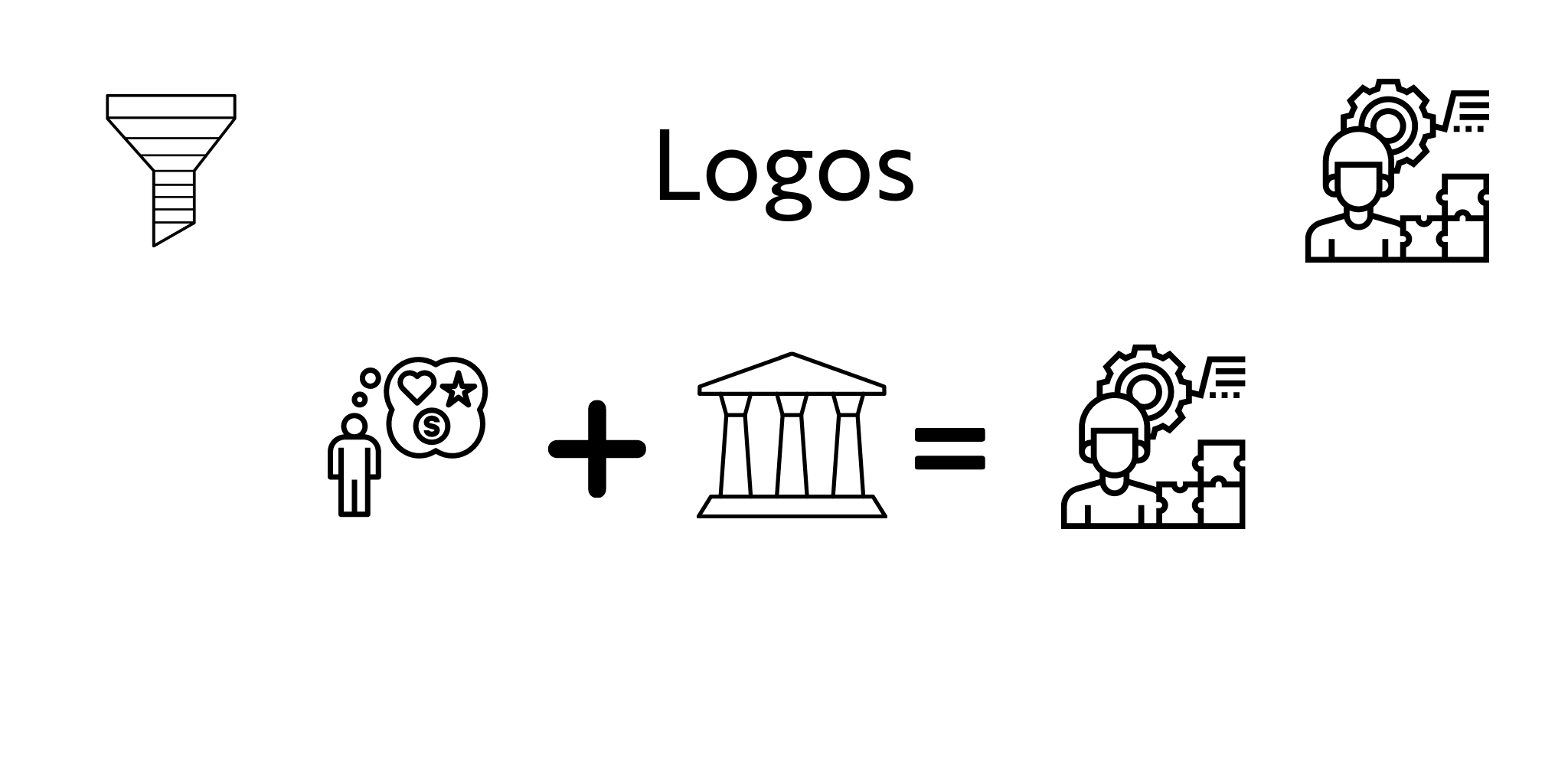Building Customers with Logos
At this stage, we want our new customers to be so happy with their purchase, that they don’t unsubscribe or return our offering. The way to do this is to make it as easy as possible to start using your offering to do the intended job.

The second part of the Story Funnel is how we build customers. If this were a play or a movie or a novel, this is Act 2. We’re going to use Logos (logic) as our main tool in building customers up so that they are happy with their initial experience with the brand.
Unlike a play or a novel, the build stage is the shortest stage in the Story Funnel because we want to get our customers onboarding and using the product as quickly as possible. This is also the part of the funnel where the buying experience is going to make or break the payoff part of the funnel. A poor “unboxing” experience will create a bad first impression -- which is something we want to avoid.
The Logical Appeal or Logos
As we mentioned in the hook stage, prospects are initially hooked on emotions and justify a purchase based on logic. At this stage, we want our new customers to be so happy with their purchase, that they don’t unsubscribe or return our offering. The way to do this is to make it as easy as possible to start using your offering to do the intended job.
The Power of “Unboxing” or First Impressions
The unboxing experience (be it physical or virtual) is the ultimate first impression that will make or break the relationship with your new customer. A clunky, hard, and or difficult unboxing will leave a lasting impression that might make people feel there were ripped off or taken advantage of. This is why it’s critical to get that first impression right.
While there are emotions baked into this first impression, it’s really a logical process in that you want the steps to set up and use the offering to be simple, clear, and concise. That way, your new customer will feel the love and care (emotion) that you want them to feel all while justifying their purchase by saying wow, that was so easy to setup.
Think like a 5-Year-Old
Ryan’s World is one of the most popular toy unboxing sites on YouTube. He currently has 27.4M subscribers and has expanded his channel to all sorts of offerings including educational videos. The power of Ryan’s unboxing videos lies in the reactions to that first moment that you get your new toy. This same joy is how you want your customers to feel.
Of course, joy is an emotion and we’re talking about logic for this part of the Story Funnel. So, what gives?
While the focus of this part is the simple and logical progression from buying -> onboarding -> using with the simplest of steps, we want the emotion from the hook stage to be “paid off.” What this means is that the expectations need to be met when the customer first interacts with your product. That’s done by making those first moments with the product so easy and logical that they say three more important works.
That Was Easy
Recall we talked about the three most important words at the hook stage was “Tell Me More” well at this stage, we want those words to be That Was Easy.
The ease of which the unboxing or onboarding process is, the better off your new customers will be. The best example of this is Apple. When you buy a new MacBook, the initial experience is so easy, seamless, and logical, that you feel even better for purchasing one. In fact, that initial experience strengthens the justification for the extra expense. The experience also leaves you with a bit of awe in the sense that Apple took all that time and effort to make sure you were taken care of. It then dawns on you that the whole onboarding process will only be done once.
Wants/Needs + Structure = Logical Justification
Before we start creating the build phase, we’re going to go over two more questions in the Brand Story Guide that relate to this part -- wants/needs and structure.
Wants/Needs will relate to the external want and how it relates to the internal need. This is best explained by this simple example. When you buy a new drill, you are buying one because you need a hole or rather a series of holes of the same size. The drill is the tool that gets the job done of making the hole.
Structure relates to the actual offering and who the offering is for. An offering can be a product, service, donation, or a hybrid of all three. All of those have different conventions and requirements for a successful onboarding (which will get to later). Who will buy your offering relates to the types of people it’s intended for. This can range from Consumers (B2C), Businesses (B2B), Governments (B2G), and all points in between like Direct to Consumer (DTC) and Direct to Developer (DTD)
These two questions combine to justify the purchase (e.g. are my needs met and is this actually for me) and form the core of a great onboarding process. Of course, there will be some overlap from the hook stage and we’ll look towards the payoff stage as well to set that up for success.
The whole goal of this stage is to seamlessly get as many customers through it as rapidly as possible without frustration or returns or downgrades to free (if you offer that). We do that by breaking down the experience into simple and logical chunks to reinforce the emotions they felt at the hook stage as well as justify the purchase through logic.
Are you ready to think (and feel) like a 5-year-old to figure out your customers wants/needs?

